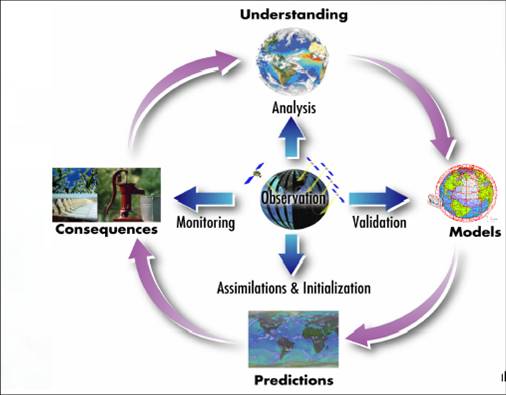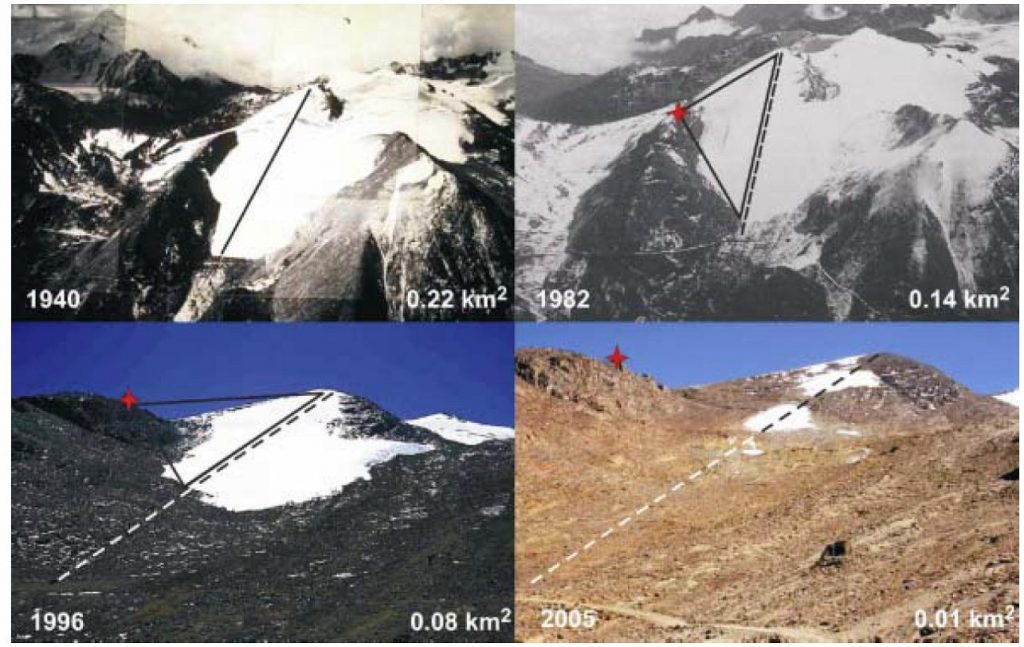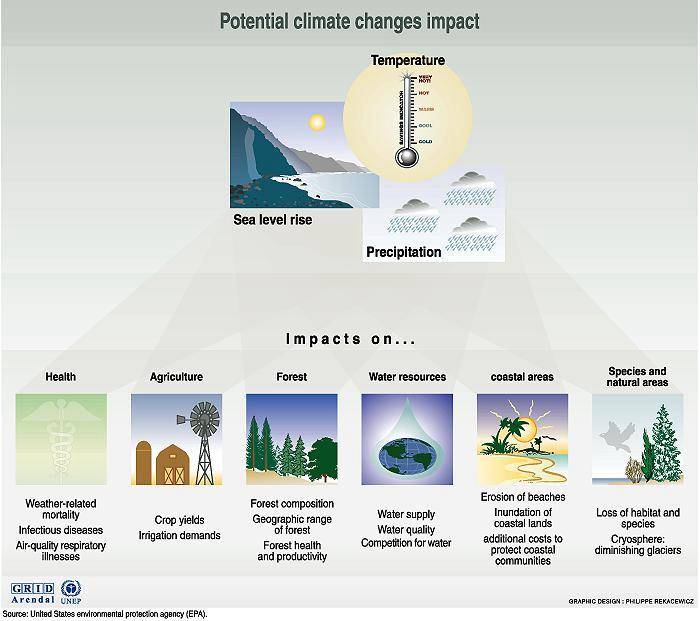Recent Comments
Archives
Categories
- No categories
Meta
12.2. Climate Change
Climate Change
What is Climate Change?
- Changes in global temperature
- Changes in patterns of precipitation and extreme weather events (increased risk of droughts, floods etc.)
- Additional sea-level rise that will gradually inundate coastal areas
- Threats to biodiversity
- Potential challenges for public health.
Role of Remote Sensing:

Activity
Come up with one impact climate change will have on four of the following:
- Health
- Agriculture
- Forest
- Water Resources
- Coastal Areas
- Species and natural areas
Show Answer
This image shows glacial retreat in Chacaltaya Glacier, Bolivia, from 1940 to 2005:

Glacial retreat can be accurately assessed by use of remote sensing. For further information see the excellent resources for Google Earth at the National Snow and Ice Data Center.
Activity
Go to the flood map at firetree.net.
Turn on the Hybrid map and navigate to the mouth of the Nile in Egypt. Experiment with different water levels to see how sea level rise will affect this ancient cultivated area.
Q1]The model works by colouring all regions below the water level selected, does this work well?
Q2] What part has remote sensing played in this model?
Show Answer
Climate Change and Malaria
It is now established that global climate change would affect human health via directly or indirect pathways. Climate change acts via indirect mechanisms to affect the ecosystem and therefore the transmission of many diseases. The distribution and abundance of vector organisms (carriers like mosquitoes) and intermediate hosts are affected by both;
- physical factors (temperature, humidity. rainfall etc.)
- biological factors (vegetation, host species, competitors, predators etc.) in the ecosystem.
N/B: The slides below will not show on the webpage, but you can save/keep them on your computer and view them using the Adobe Flash Player 32 you downloaded earlier
References
Beck, L.R., Lobitz, B.M. and Wood, B.L. (2000). Remote sensing and human health: new sensors and new opportunities. Emerging Infectious Diseases 6, 217–226.
SI Hay, J Cox and DJ Rogers et al., Climate change and the resurgence of malaria in the East African highlands, Nature 415 (2002), 905–909.
